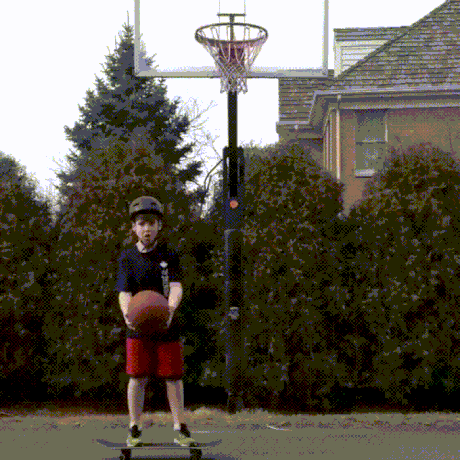To Do This Week
DUE Diagrammatic Narrative
Watch: An Occurrence at Owl Creek Bridge – the short film is available for $1.99 on Prime, Google Play, YouTube etc.
Read: An Occurrence at Owl Creek Bridge, by Ambrose Bierce
Blog prompt:
After watching the film adaptation of “An Occurrence at Owl Creek Bridge” and then reading the short story by Ambrose Bierce, write a blog post about the differences between the two works. What was removed or changed in the film version and why? What techniques in film language – pacing, editing, shot composition – successfully translate the effects in the short story?
Class
Diagrammatic Narratives – Presentation
Visual Narratives
One-on-one Zoom meeting (5%)
This meeting is to discuss your story ideas and the Final Project
Set up a time between now and April 7th
I am available on Zoom MTWTHF 11am-3:00pm or after class
Terms:
film, video, moving image, cinema
frame, shot, sequence
Continuity –
- 180 degree rule and screen direction
- match on action
- shot reverse shot
- POV shot
- parallel action (driven by narrative)
- graphic match
Discontinuity
- images juxtaposed based on something other than direct spatial/temporal continuity
- cutting based on time or counted frames in shot
- cutting based on shared theme of each shot
- summary of events over extended time
- subjective experience/thought/dream
Discuss Occurrence at Owl Creek Bridge…
An Occurrence at Owl Creek Bridge, by Ambrose Bierce
Continuity revealing information / building suspense
Chaos Cinema (post-continuity)
Montage – rhythm, metaphor, associational thinking, dream, intellectual argument
Discontinuous – fragmented, montage, jumpcuts, rhythmic cuts (on sound)
Continuity + Spatial Montage
LOOPS
Exact Repetition
short-term memory = under 20 seconds
Narrative loops – beginning > middle > end
Fractured narrative loops – Adam Goldberg Vines
Montage loops – variable duration of each shot
fookedonhonix
— FookedonHonix (@morgantj) April 14, 2020
— FookedonHonix (@morgantj) June 30, 2018
Loops in new media – movement and interactivity
FilmText, by Mark Amerika
Zoe Beloff
Simultaneous Loops
Interactive Cinema, by Uda Atsuko http://www.iamas.ac.jp/~makura/index_old.html
Sequential Loops
Interactive Cinema, by Uda Atsuko http://www.iamas.ac.jp/~makura/index_old.html
Nested Loops
an asynchronous assemblage of nested loops offers a picture of fractal time;
simultaneous temporalities of different scales, rhythms and durations.
Adobe Premiere > Youtube tutorial
In-Class loop activity:
In small groups, come up with three ideas for narrative loops (10-20 seconds) in each category below.
Shoot and edit together each loop using a phone camera (set at 720p) and then edit as a group with Adobe Premiere. Repeat the clips at least three times to show the loop at work.
Export the loops to .H264 format with a preset for 720p for YouTube or Vimeo. Upload to one of these and post the url into a blog post.
- Continuity loop – Follow an action with a beginning, middle and end. The shots should follow rules of continuity: match on action, POV, screen direction, cut in
- Montage loop – Create a dream sequence loop. The shots should be mostly discontinuous clips. Play with contrasts of distance, color, shape between each shot.
- Montage and Continuity – combine the two editing techniques into a mini story.
Video/Audio Narrative (10%)
DUE March 21st
For this project, you are to make a 1-2 minute video using continuity and/or montage techniques. Edit together video clips, animation and/or still images, recorded audio, voice over and/ or sound effects to tell the story. It is up to you how you “narrate” the story – through just images with sound effects, your own voice-over, text on the screen or an interview with the subject. The images do not have to illustrate the spoken narration, but should relate and help reinforce the story. This project is about using multiple types of media to tell a time-based story.
Ideas:
- a personal story or an anecdote: You probably will need to use voice-over (or text-over image) and either images from your archive or shoot video that stands in for the past events. How might you add sound effects?
- a story about an object: Similar to the above, but the story or anecdote is about an object. Show the object in various angles/framings.
- a sound-driven story: Create a story with sound effects over video or still images. No language. Scary stories are good with this form.
- an episodic video essay: tell a series of mini-stories organized alphabetically.
WORKSHOP
Work on Visual Narratives DUE March 7
NEXT WEEK’s Blog Assignment: Using your smartphone, record video of your experience of one day in short video shots. This is an assignment to use a variety of framed shots (close-up, medium and long) to create a montage portrait of one day in your life – morning to night.
- This is to be “first person” shooting, what you see around you, where you are. No direct selfies, please. And shoot horizontally!
- Shoot at least 10-seconds of video and audio for each shot. These will be edited down to shorter 1-4 second shots in the final work.
- Ideally, your camera should be set to HD 720p, which is good for YouTube.
- Shoot at least 10 shots throughout the day – in your home, with friends, on your commute, at a job, doing errands, on campus. You can set a timer every hour or so to remind you.
- Think about what it is you are capturing and frame appropriately. Don’t just turn on the camera at anything. Capture the details of life passing by. Find a variety of moods, visual rhythms and sounds. What is the shot that starts your day? What closes the day?
- In Premiere, edit these sequential shots into a 30-second video.
- Please keep the original sound of each shot and don’t add music – a day is made of both quiet and loud moments.
- Export to the format .H264 and a Vimeo or YouTube preset for 720p.
- Upload to YouTube or Vimeo and post to the blog.
